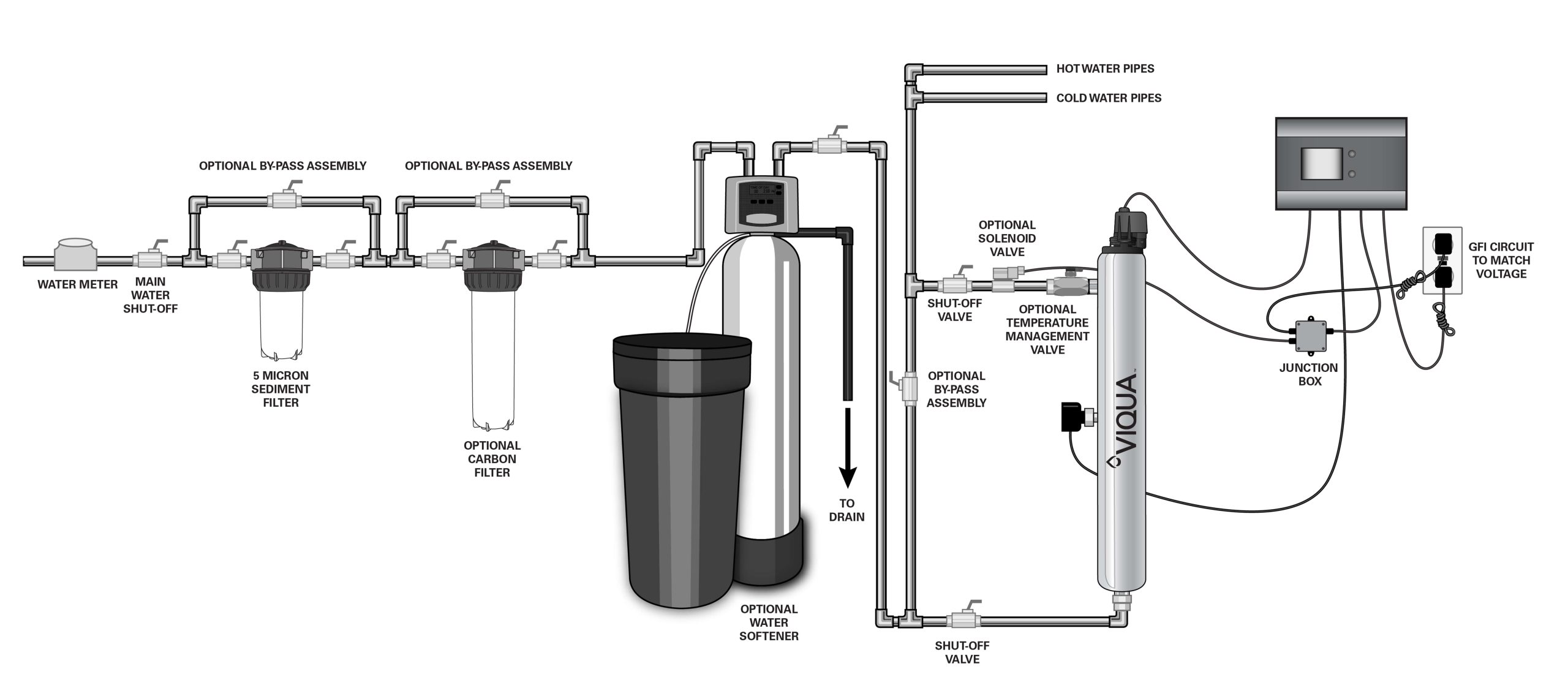


Complete elimination of bacteria in high purity water systems, while highly desirable, is all but impossible given technologies available today. At best, it can be reduced, and its proliferation minimized. Disinfectants such as ozone or chlorine, while highly effective, cannot be tolerated in high purity water treatment other than as part of periodic cleaning and disinfection regimens.
Exposing bacteria to light of wavelengths around 200-300 nanometers in the UV spectrum reduces bacterial proliferation by altering cellular physiology in a manner that minimizes or prevents cellular reproduction.
How do UV treatment systems work?
Ultraviolet light can be found on the electromagnetic spectrum somewhere between visible light and x-rays and can be used to kill microorganisms present in water, such as bacteria. All living organisms contain DNA, a nucleic acid that contains the genetic instructions used in the development and functioning of living organisms. The main role of DNA is the long-term storage of information and DNA is often compared to a set of blueprints, since it contains the instructions needed to construct other components of cells such as proteins and RNA. The DNA segments that carry this genetic information are called genes, but other DNA sequences have structural purposes, or are involved in regulating the use of this genetic information.
Dosage is a function of wavelength, intensity, and time of exposure. If the dosage is not optimized, then complete inhibition of replication WILL NOT occur. An insufficient UV dosage may cause limited damage to the DNA which can, under favorable conditions, repair itself using repair enzymes. At wavelengths and intensities typically used for disinfection, UV water treatment systems do not remove organics that have been dissolved in the water, and the effectiveness of ultraviolet disinfection depends on the dosage, which is a function of lamp intensity and length of exposure to the light.
Total Oxidizable Carbon is undesirable in high purity water systems because it serves as a food source to support bacterial proliferation and may interfere with downstream processes. TOC’s are present in most municipal water systems, especially those that are surface-sourced, at levels of 1-20 parts per million or more. High purity water specifications typically require TOC levels below 10 parts per billion. This means significant TOC reduction is often necessary. The use of activated carbon or organic-scavenging ion exchange resins may help reduce TOC levels as part of pretreatment; however, these typically do not provide reduction to ppb levels and are generally not appropriate as part of the high purity water recirculation and polishing system.
For final treatment and polishing, the chosen system must be capable of achieving and maintaining ppb TOC levels and must not impart impurities to the water. Meeting these criteria, ultraviolet TOC destruct systems are often used for the effective reduction of this group of compounds (these are also referred to as “TOC burners”).
